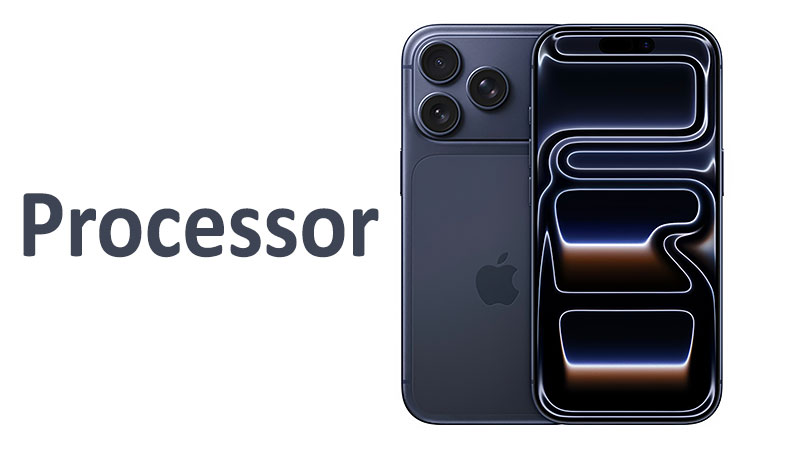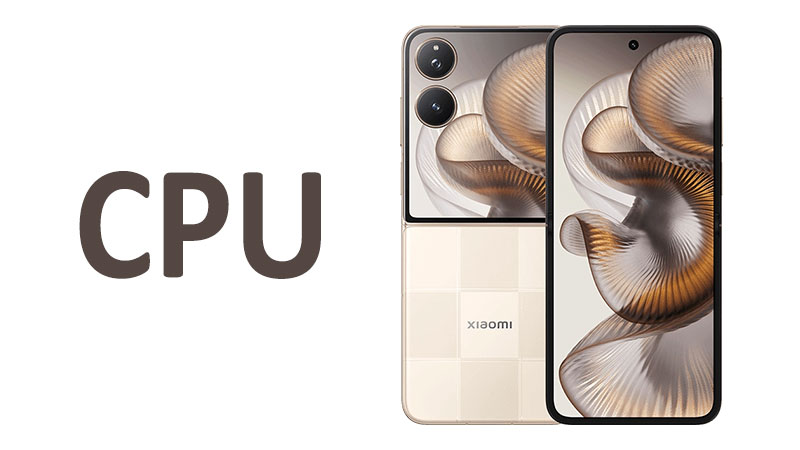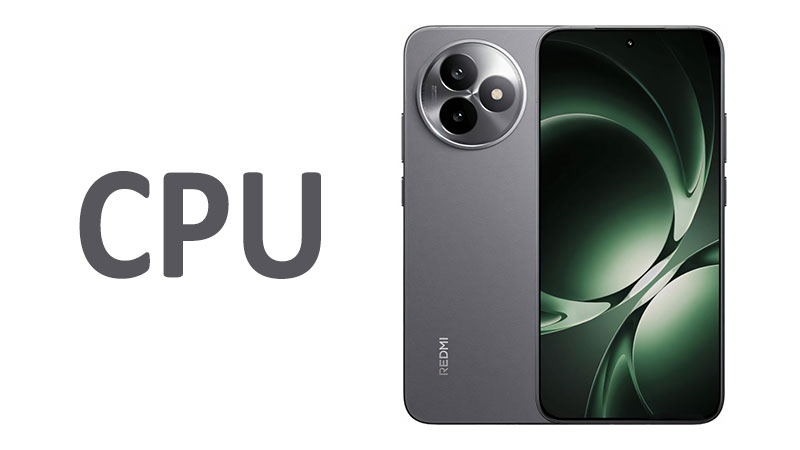The Apple iPhone 17 Pro Processor represents a monumental leap in mobile computing. This crucial silicon component defines the user experience entirely. Every major feature depends heavily on its power and efficiency. The new Apple A19 Chipset promises to reset industry standards. It delivers power previously unseen in a smartphone form factor. This comprehensive review examines the A19 Pro’s architecture and performance in detail. It will help you understand its true impact on the iPhone 17 Pro.
The Foundation of Power: 3nm Manufacturing Process
The A19 Chipset is built upon the advanced 3 nm fabrication process. This technology is often referred to as N3P or N3E. It comes from Apple’s primary manufacturing partner, TSMC. The process node refers to the size of the transistors on the chip. Smaller transistors are highly beneficial in multiple ways. They dramatically increase the transistor density. This means Apple can pack more computing units into the same physical space.
Specialized Comparison: 3nm vs. Previous Generations
Moving from the older 4 nm or 5 nm nodes to 3 nm offers two main advantages. First, it brings significant improvements in power efficiency. This efficiency gain can reach up to 35% over 5 nm chips. Second, it allows for a performance boost at the same power level. This gain typically ranges between 15% and 20%. The A19 Pro leverages this 3 nm foundation perfectly. It converts efficiency gains into both longer battery life and faster speeds. This technological migration is the single biggest hardware improvement. It enables all subsequent performance increases.
Key Points for the Reader
- Miniaturization: The 3 nm process allows for billions more transistors.
- Efficiency: It requires less power to switch each transistor. This directly extends battery life.
- Density: More logic is packed onto the chip. This enables superior AI and graphical computing.
A19 Pro Architecture: Deconstructing the Hexa-Core CPU
The central component of the A19 Pro is its custom-designed Hexa-core CPU. This CPU utilizes Apple’s established hybrid architecture. It combines specialized cores for different workload types. The configuration consists of two high-performance (P) cores. It also includes four high-efficiency (E) cores. This arrangement optimizes tasks by balancing speed and battery use.
The Power Cores: Speed and IPC Boosts
The two high-performance cores are the heavy lifters. They handle intensive tasks like gaming, video editing, and complex multi-tasking. They feature a remarkable clock speed of 4.26 GHz. This clock speed is a significant generational leap. It ensures market-leading single-core performance. This performance gain is crucial for general system responsiveness. App launch times become instantaneous. Web browsing remains fluid even on heavy sites.
Apple has also engineered significant Instruction Per Cycle (IPC) improvements. IPC refers to the amount of work each core performs per clock cycle. The A19 Pro sees improved front-end bandwidth. It also features better branch prediction capabilities. These architectural tweaks provide 10% to 15% more raw CPU speed than the A18 Pro. This improvement means the chip performs better even without higher clock speeds. However, the combined clock speed increase and IPC boost deliver industry-leading performance metrics.
The Efficiency Cores: Unmatched Power Management
The four efficiency cores handle everyday background tasks. These include managing notifications, updating widgets, and processing audio. We can project their clock speed is around 2.5 GHz. Their primary goal is conserving power, not raw speed. They use dramatically less energy than the P-cores. This greatly contributes to the phone’s exceptional overall battery longevity.
The efficiency core cluster has reportedly received a 50% increase in last-level cache (LLC). This is a crucial architectural upgrade. The larger cache reduces the need to access the slower system memory. Consequently, tasks run faster while using less power. This optimized handling of background tasks is vital. It keeps the high-performance cores free for demanding, foreground activities.
Specialized Comparison: Sustained Performance
The A19 Pro’s true advantage is sustained performance. The iPhone 17 Pro introduces an advanced thermal management system. This includes a vapor chamber cooling architecture. This system efficiently moves heat away from the A19 Pro Chipset.
- The A18 Pro, despite high peak performance, often throttled under stress.
- The A19 Pro, paired with the vapor chamber, sustains peak speed much longer.
- Apple claims up to 40% better sustained performance than the A18 Pro.
This sustained performance is essential for long gaming sessions. It also matters for rendering 8K video files. The A19 Pro delivers powerful performance that lasts.
Graphics Powerhouse: Reviewing the 6-Core Apple GPU
The Apple GPU in the iPhone 17 Pro features a 6-core configuration. This GPU is specifically optimized for high-end mobile graphics. Graphics performance is often the most noticeable upgrade for consumers. The A19 Pro delivers substantial improvements in this area. It focuses heavily on gaming and augmented reality (AR) applications.
Architectural Innovations: Dynamic Caching
The GPU utilizes the second generation of Apple’s Dynamic Caching architecture. This technology allocates memory in real-time. It maximizes GPU utilization and efficiency. It avoids wasting valuable memory bandwidth. This leads to smoother frame rates and faster rendering. Furthermore, the A19 Pro doubles its 16-bit floating-point math performance. This improvement is critical for running modern graphics shaders and complex AI models.
Console-Quality Gaming Experience
The A19 Pro supports hardware-accelerated ray tracing. Ray tracing simulates realistic lighting, shadows, and reflections. Previous iPhones supported ray tracing, but the A19 Pro accelerates it dramatically. It enables console-quality visuals on the move. Games like Arknights: Endfield or other AAA titles benefit immensely. Developers can push graphical fidelity further than ever before. The 6-core GPU provides up to a 37% increase in raw graphics speed over the A18 Pro. This is a game-changing uplift for mobile gamers.
Specialized Comparison: A19 Pro vs. Android Rivals
Apple’s A-series chips historically lead in single-core CPU and GPU performance. The A19 Pro chipset continues this tradition decisively. It consistently outperforms rival chips like the projected Snapdragon 8 Elite. It excels in benchmark tests focusing on sustained graphical workloads. Android rivals may approach its multi-core CPU score. However, they struggle to match the A19 Pro’s graphics efficiency and raw speed. The superior GPU and thermal design keep Apple firmly ahead.
The AI Engine: Neural Network Processing Unit (NPU)
Artificial intelligence (AI) has become critical in modern smartphones. The A19 Pro integrates a powerful 16-core Neural Engine. This dedicated hardware handles machine learning (ML) tasks efficiently. These tasks include Siri processing and photo enhancements. The A19 Pro takes a revolutionary step forward in AI compute.
GPU Integration and Peak AI Compute
The A19 Pro integrates Neural Accelerators within each of the six GPU cores. These accelerators are specialized hardware blocks. They significantly boost the chip’s on-device AI capabilities. This system allows the A19 Pro to achieve 4× the peak AI compute performance of the A18 Pro. This is a monumental gain in processing capability.
Impact on Apple Intelligence (AI) Features
This AI power fuels the next generation of Apple Intelligence features.
- On-Device LLMs: The chip efficiently runs large language models (LLMs) locally. This enables faster, more private, and contextual Siri interactions.
- Advanced Photography: Image signal processing (ISP) benefits greatly. Real-time photo enhancements become more complex and accurate. Scene recognition and semantic segmentation improve instantly.
- Real-time Translation: Live translation and transcription occur instantly. The Neural Engine handles these tasks without sending data to the cloud.
The A19 Pro is truly an AI-first processor design. It moves Apple to the forefront of the generative AI race. The focus shifted from merely faster processing to smarter processing.
Power Efficiency and Battery Life Implications
The A19 Pro Chipset is not just about raw performance numbers. It also focuses heavily on “performance per watt.” This metric measures output against energy consumption. It is the most vital factor for smartphone battery life.
3nm Node Benefits
The move to the 3 nm node provides massive efficiency benefits. It drastically lowers the energy required for all computations. This efficiency gain alone translates directly into longer use times. The iPhone 17 Pro Max models promise the best battery life ever in an iPhone. This is due to the A19 Pro’s power management features.
Advanced Thermal Design
The vapor chamber cooling system is a passive technology. It uses a sealed system with deionized water vapor. This vapor efficiently transfers heat away from the processor.
- This thermal efficiency prevents unnecessary power throttling.
- It maintains higher performance over extended periods.
- The chip can run at higher average speeds using the same battery capacity.
This synergy between the efficient 3 nm chip and the advanced cooling system is essential. It provides reliable and consistent high performance for demanding users.
Key Considerations for Buyers and Readers
Understanding the A19 Pro involves knowing what these advancements mean in daily use. The chip offers benefits far beyond benchmark scores.
Target Audience
The A19 Pro Chipset targets three specific user groups.
- Power Users and Gamers: They will experience faster loading screens and higher frame rates. They will see extended periods of peak graphical quality.
- Creative Professionals: Video editing and 3D rendering speeds will improve greatly. Handling large files and complex tasks becomes much smoother. The chip supports these professional workloads easily.
- AI Enthusiasts: They gain access to cutting-edge on-device AI features. Enhanced Siri, smarter photo editing, and personalized automation are key benefits.
For most casual users, the performance jump from an A18 or even A17 may seem marginal. General app usage was already fast on older iPhones. However, the A19 Pro provides immense future-proofing. It is ready for the resource-intensive AI applications expected in the coming years.
Pros and Cons of the Apple A19 Chipset
The A19 Pro Chipset is clearly a technological marvel. Nevertheless, a balanced view requires listing its key strengths and potential weaknesses.
Pros: Key Advantages
- World-Class Single-Core Performance: The 4.26 GHz P-cores dominate benchmark charts.
- Superior Sustained Performance: Vapor chamber cooling ensures reliable, long-lasting speed.
- Groundbreaking AI Capability: The integrated Neural Accelerators offer 4× peak AI compute.
- Exceptional Power Efficiency: The 3 nm process greatly extends battery life.
- Advanced Graphics: The 6-core GPU and Dynamic Caching boost AAA mobile gaming.
Cons: Potential Drawbacks
- Thermal Complexity: The vapor chamber adds design complexity and cost to the Pro model.
- Generational CPU Gains: The core CPU speed increase might be perceived as incremental. Only highly intensive tasks reveal the full 15% architectural gain.
- Cost Implications: The advanced 3 nm node manufacturing is expensive. This contributes to the iPhone 17 Pro’s premium price tag.
Final Summary and Informed Decision
The Apple A19 Pro Chipset is an extraordinary piece of engineering. It successfully merges raw power with unprecedented efficiency. Its 3 nm construction and Hexa-core configuration create a powerhouse. The CPU achieves industry-leading single-core performance. Furthermore, the 4.26 GHz clock speed sets a new standard for mobile P-cores.
The most significant leaps happen in specialized areas. The 4× AI compute provides a platform for future Apple Intelligence. The 6-core GPU transforms the mobile gaming experience entirely. Crucially, the iPhone 17 Pro’s vapor chamber cooling is a game changer. It ensures that this immense power is sustained under load. This prevents annoying performance drops.
If you own an iPhone 16 Pro (A18 Pro), the upgrade offers strong benefits. These are mainly in AI, gaming, and battery longevity. If you are upgrading from an older device (iPhone 14 Pro or earlier), the performance difference is massive. The A19 Pro makes the iPhone 17 Pro the most future-proof smartphone available. It is the definitive choice for professionals, gamers, and early adopters of AI technology. The A19 Pro is much more than just a faster processor. It defines the next era of mobile computing.
FAQ
What is the A19 Chipset’s process node?
The A19 Chipset is built using the advanced 3 nm fabrication process. This technology provides superior efficiency and transistor density.
How many CPU cores does the A19 Pro have?
The A19 Pro uses a Hexa-core CPU configuration. It includes two high-performance P-cores and four high-efficiency E-cores.
What is the key innovation for gaming performance?
The GPU features 2nd generation Dynamic Caching and 6-core graphics. It also has hardware-accelerated ray tracing capabilities for superior visual fidelity.
Does the A19 Pro include a Neural Engine?
Yes, it includes an updated 16-core Neural Engine. It also features Neural Accelerators integrated into each GPU core.
What is the clock speed of the high-performance cores?
The two high-performance P-cores operate at a maximum clock speed of 4.26 GHz. This helps the chip achieve record single-core benchmarks.



